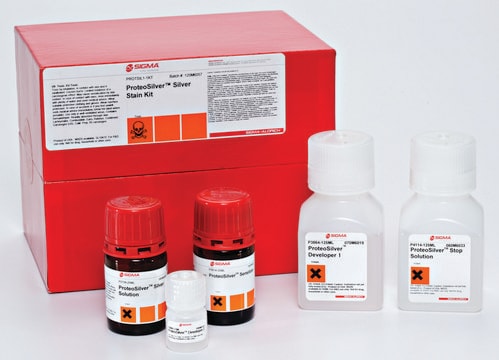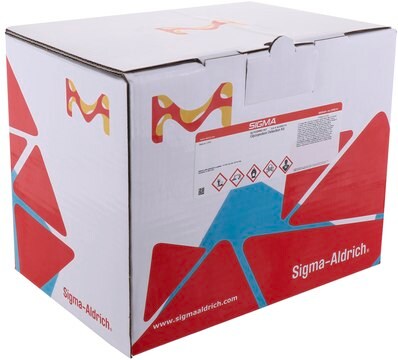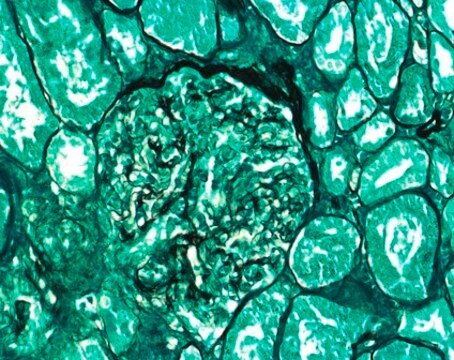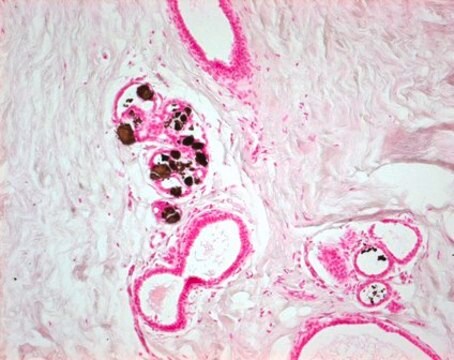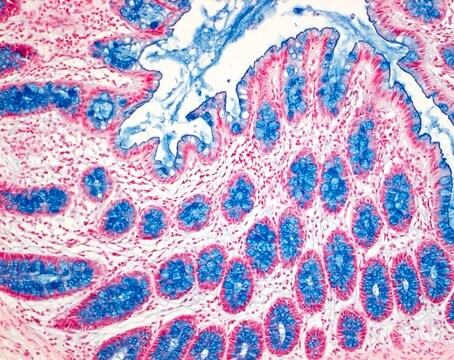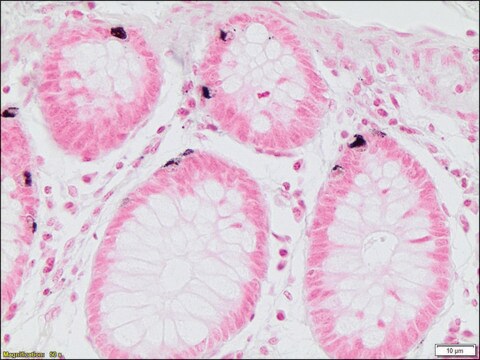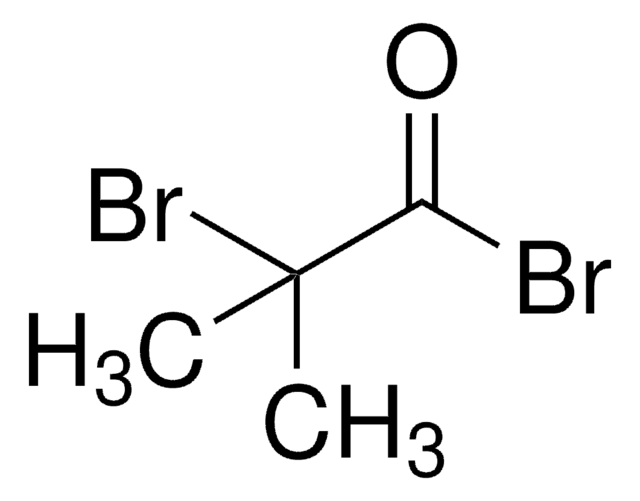PROTSIL2
ProteoSilver™ Plus Silver Stain Kit
Sinónimos:
protein stain, silver stain
About This Item
Productos recomendados
usage
kit sufficient for 25 mini-gels (10 × 10 cm)
Quality Level
technique(s)
protein staining: suitable
storage temp.
20-25°C
General description
ProteoSilver Plus is also MALDI-MS compatible and does not contain glutaraldehyde, which crosslinks lysine residues, resulting in inaccurate spectra. ProteoSilver Plus Silver Stain Kit contains two additional reagents for destaining an excised protein spot, for those wishing to perform further characterization through tryptic digestion and MALDI-MS analysis.
Application
Features and Benefits
- Premixed and preweighed solutions reduce time and cost of purchasing and preparing individual components
- Optimized protocols help establish conditions for best results
- High sensitivity and low background ensure very low abundance proteins can be detected and resolved from other proteins
- MALDI Compatible - Protein spots of interest can be further characterized by mass spectrometry
- Room Temperature Stability allows easy and convenient storage
Legal Information
signalword
Danger
Hazard Classifications
Acute Tox. 2 Inhalation - Acute Tox. 3 Dermal - Acute Tox. 3 Oral - Aquatic Acute 1 - Aquatic Chronic 1 - Carc. 1B - Eye Dam. 1 - Met. Corr. 1 - Muta. 2 - Repr. 1B - Skin Corr. 1A - Skin Sens. 1 - STOT SE 2 - STOT SE 3
target_organs
Eyes,Central nervous system, Respiratory system
Storage Class
6.1A - Combustible acute toxic Cat. 1 and 2 / very toxic hazardous materials
wgk_germany
WGK 3
flash_point_f
149.0 °F - closed cup
flash_point_c
65 °C - closed cup
Certificados de análisis (COA)
Busque Certificados de análisis (COA) introduciendo el número de lote del producto. Los números de lote se encuentran en la etiqueta del producto después de las palabras «Lot» o «Batch»
¿Ya tiene este producto?
Encuentre la documentación para los productos que ha comprado recientemente en la Biblioteca de documentos.
Artículos
To meet the great diversity of protein analysis needs, Sigma offers a wide selection of protein visualization (staining) reagents. EZBlue™ and ProteoSilver™, designed specifically for proteomics, also perform impressively in traditional PAGE formats.
Nuestro equipo de científicos tiene experiencia en todas las áreas de investigación: Ciencias de la vida, Ciencia de los materiales, Síntesis química, Cromatografía, Analítica y muchas otras.
Póngase en contacto con el Servicio técnico